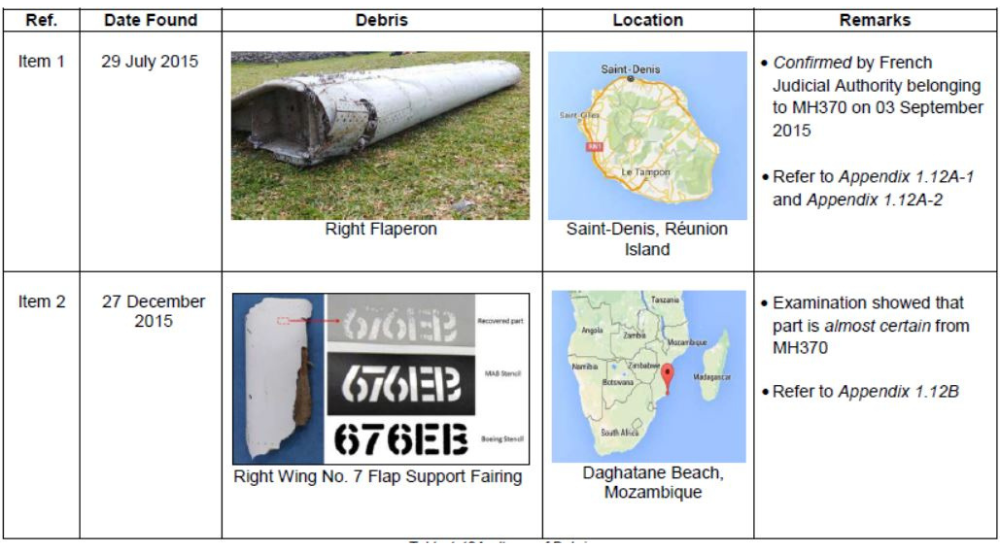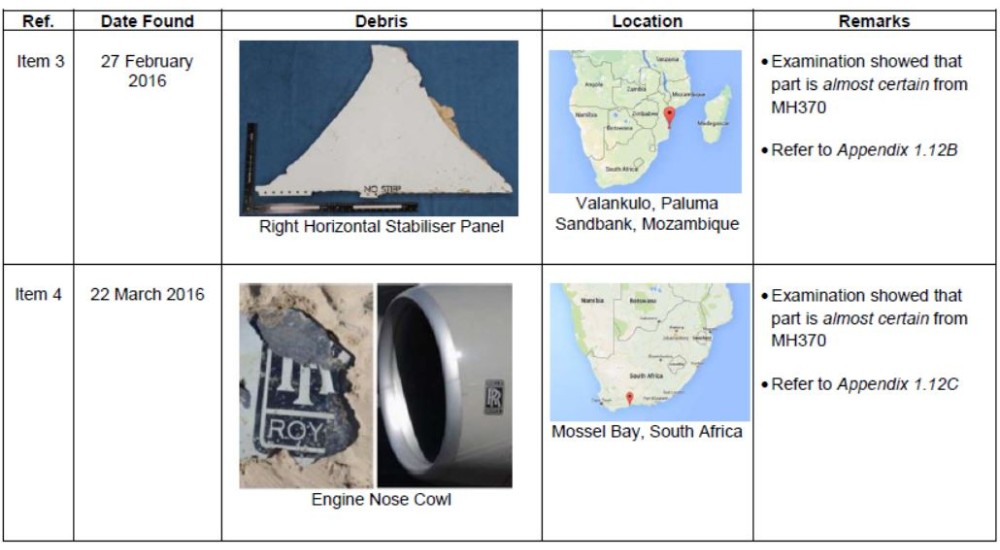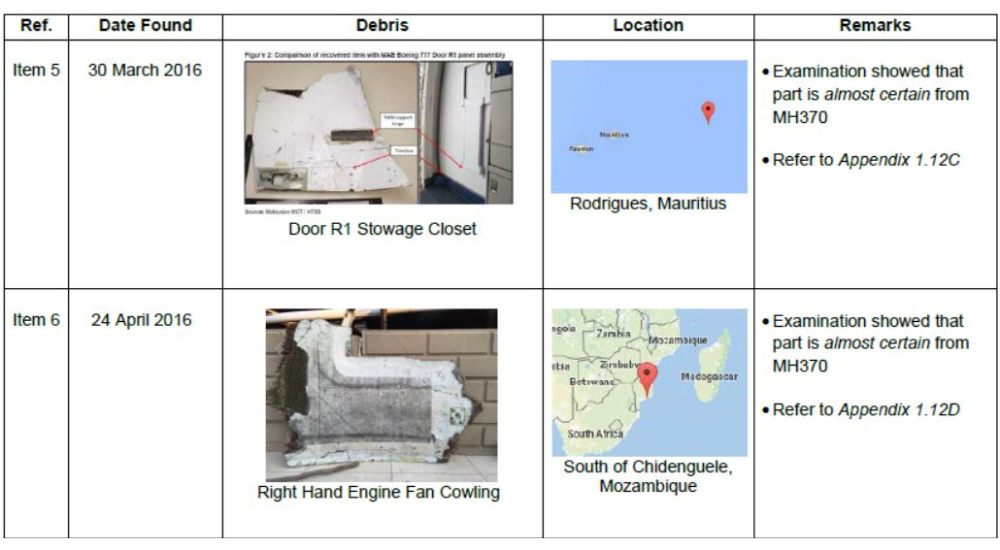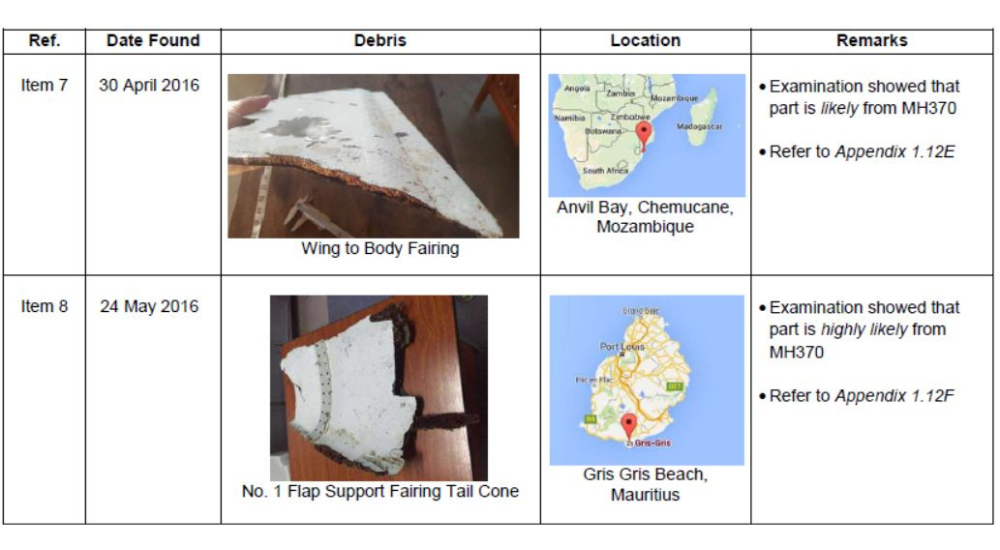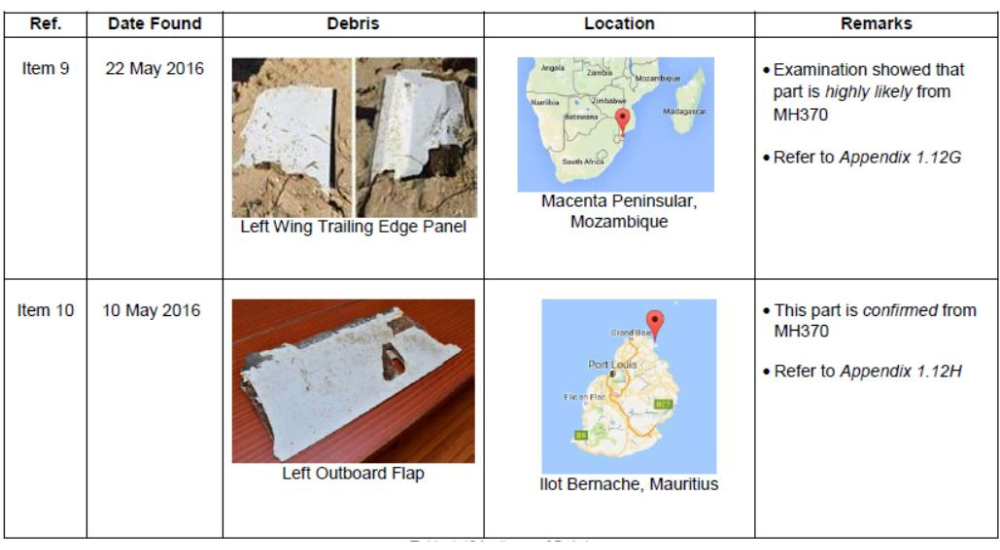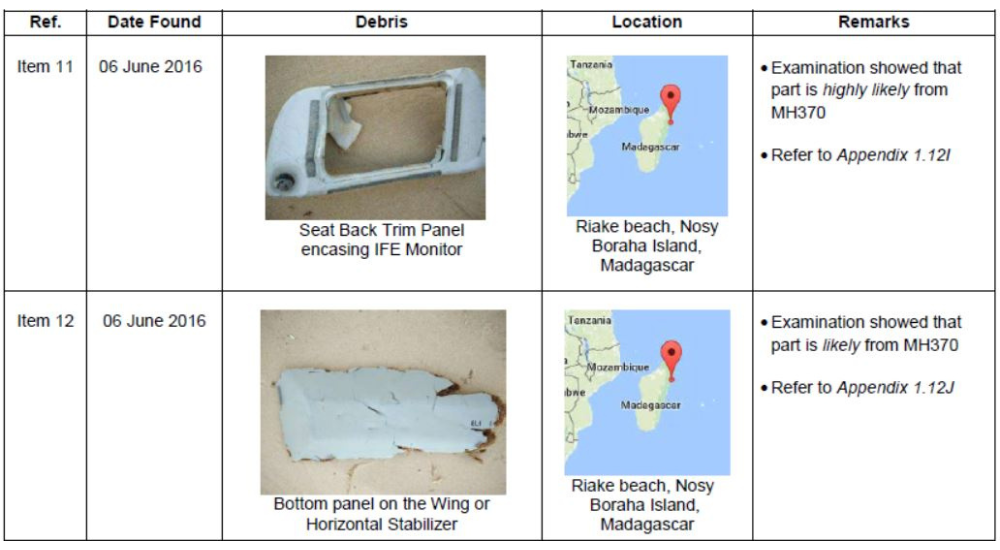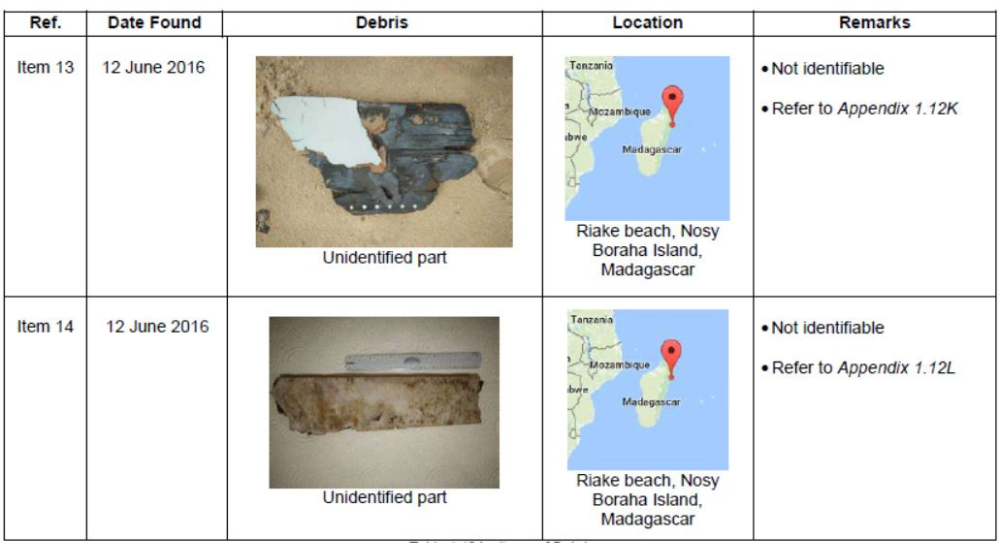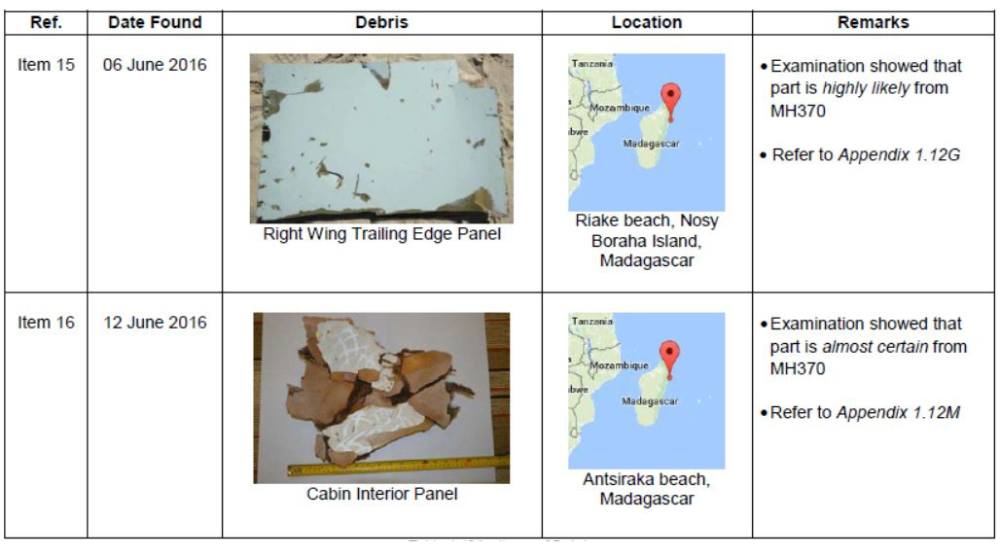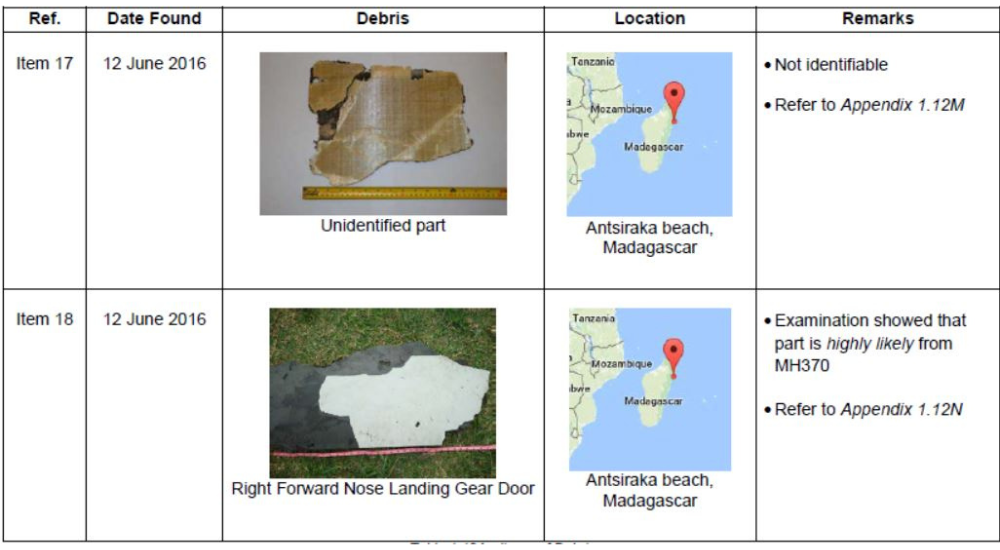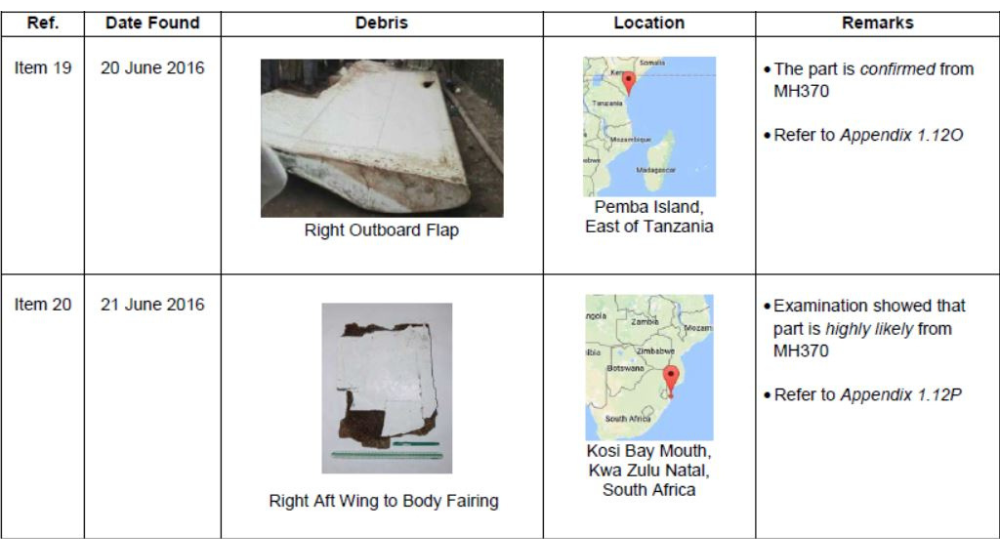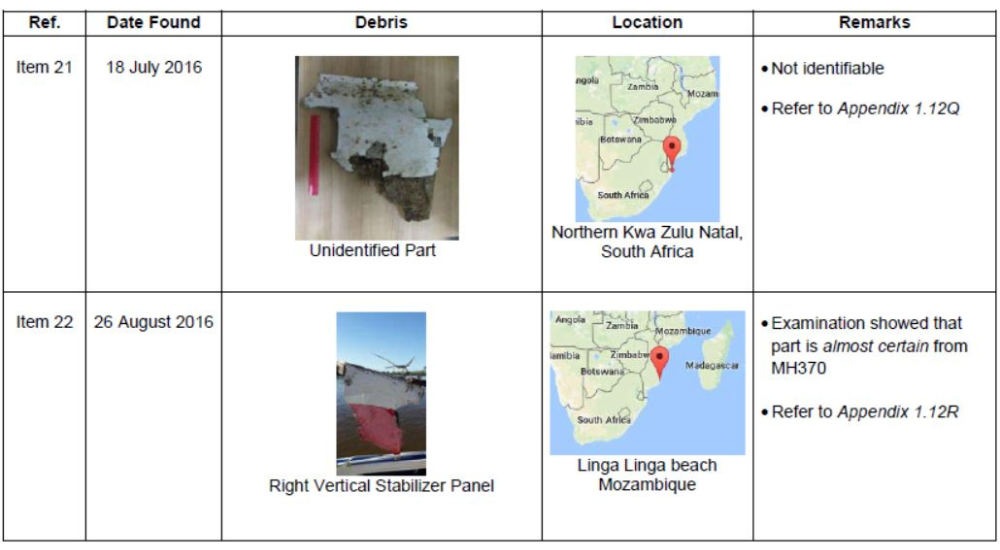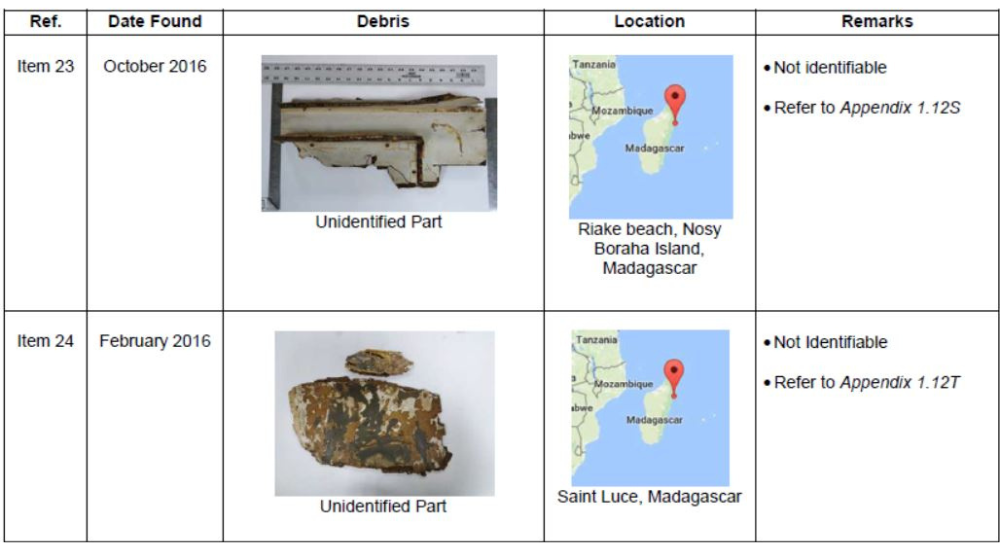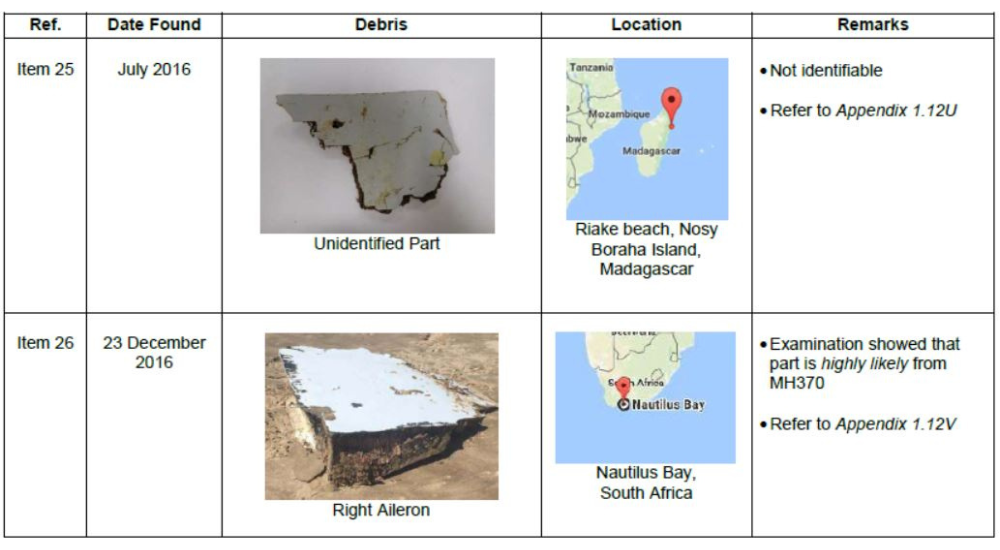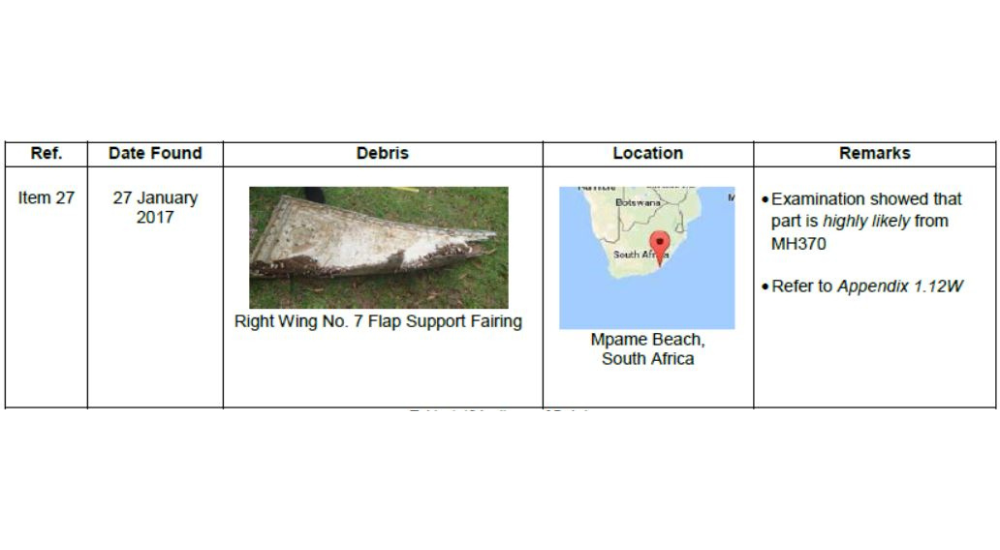MH370: the history
Timeline of the event
This is the basic history of the event: On 7 March 2014 at 16:41:43Z1, Malaysian Airlines flight MH370 departed Kuala Lumpur (KL) International Airport bound for Beijing. Less than an hour later, following the last recorded radio transmission from MH370 at 17:19:30Z, the plane’s secondary radar transponder went offline. Malaysian military radar showed that the plane (registration number 9M-MRO) then veered off course unexpectedly, backtracked across the Malaysian Peninsula, and they then tracked it heading northwest from Penang through the Malacca Straits.
After disappearing from radar at 18:22:12Z, it re-established a satellite communications (SATCOM) link with the Inmarsat satellite I-3F1 at 18:25:27Z. By analyzing a series of automated messages exchanged via that satellite between the plane and an Inmarsat ground station in Perth, Australia, Inmarsat experts determined that the plane continued to fly for six hours, before finally ceasing message exchange with the ground station at 00:19:37Z on 8 March 2014. They showed that the Burst Frequency Offsets (BFOs) corresponding to the last two SATCOM messages from the plane at 00:19:29Z and 00:19:37Z suggested that flight MH370 was rapidly descending and accelerating downwards when message exchange with the ground station ceased. Inmarsat experts did an initial analysis of the SATCOM metadata for MH370 in the last six hours of flight and they suggested that MH370 had flown into the Southern Indian Ocean before SATCOM was ultimately lost.

MH370 Timeline History of the events
International Search
An international search team performed an intensive aerial and surface search in the Southern Indian Ocean by during March and April 2014, with no MH370 related debris found. On 28 April 2014, the aerial search concluded and the search transitioned to an underwater phase.
The governments of Malaysia, Australia and the People’s Republic of China agreed that Australia would take the lead in the underwater search operation in the southern Indian Ocean. The Australian Transport Safety Bureau (ATSB) led the underwater search for missing Malaysia Airlines flight MH370 in the southern Indian Ocean, including analysis of the search area, the sea floor mapping and sea floor search. Geoscience Australia provided specialist advice and capability in the sea floor mapping and underwater search and provided an understanding of the environment in which the search was conducted.
The search comprised of two phases, Phase One, a bathymetric survey, that provided a detailed map of the sea floor topography in the search area; this was used to guide Phase Two, the underwater sea floor search. The underwater search used sidescan and multibeam sonar equipment mounted on towed and autonomous underwater vehicles to collect high-resolution sonar images of the sea floor in an attempt to identify the location of MH370.
Despite every effort using the best science available, cutting edge technology, as well as modelling and advice from experts across a range of fields, the search has not been able to locate the missing aircraft. The missing aircraft was not located within the 120,000 square kilometre underwater search area. Accordingly, in January 2017, the governments of Malaysia, Australia and the People’s Republic of China jointly announced the suspension of the search until further credible evidence is available that identifies the specific location of the aircraft.
Debris discovery
However, during all this time and one year after the accident, some debris started to wash out along the coast and associated islands of the South-East of Africa, as below:
From all the above debris found, only a handful we can truly attribute to the MH370 flight. We show below An overview of these debris items and their position on the plane:
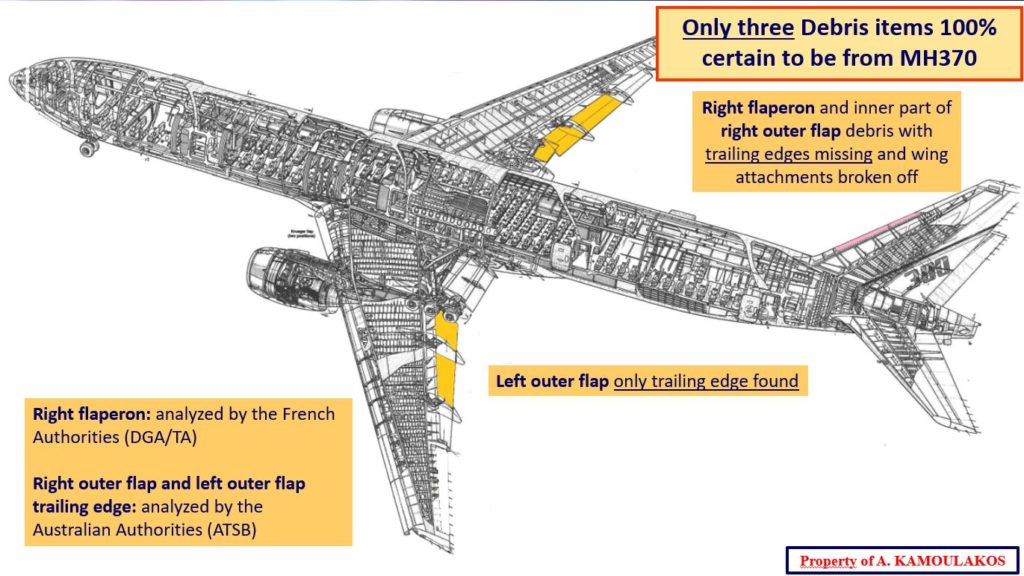
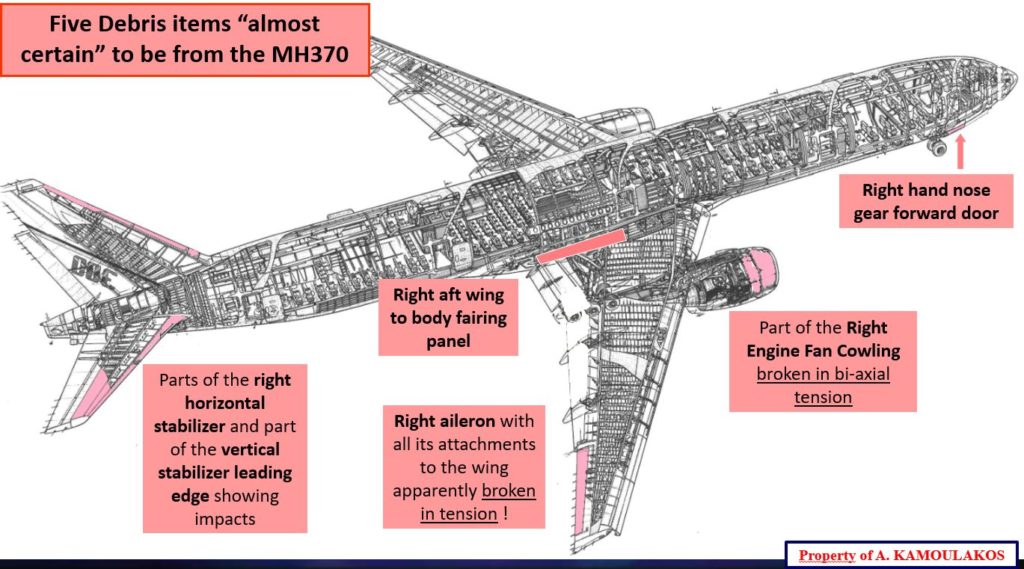
We know also the involvement of Blaine Gibson in the search for Malaysia Airlines Flight MH370. Blaine Gibson is not an aviation expert but a lawyer and artist. However, he became interested in the MH370 case and decided to contribute in his own way. He spent a significant amount of time and personal resources searching for debris from MH370 along coastlines in various countries, particularly in the western Indian Ocean region. Blaine Gibson traveled to remote islands and beaches to collect pieces of debris that might have come from the missing plane. He motivated his efforts by a desire to help find answers for the families of the passengers and crew members who were on board the flight. We feature some of his findings in this website.
Gibson’s work garnered media attention, and he became a well-known figure in the context of the MH370 search. His dedication and persistence in searching for debris helped raise awareness about the ongoing investigation and the need to continue searching for clues that might lead to a better understanding of what happened to the flight.
